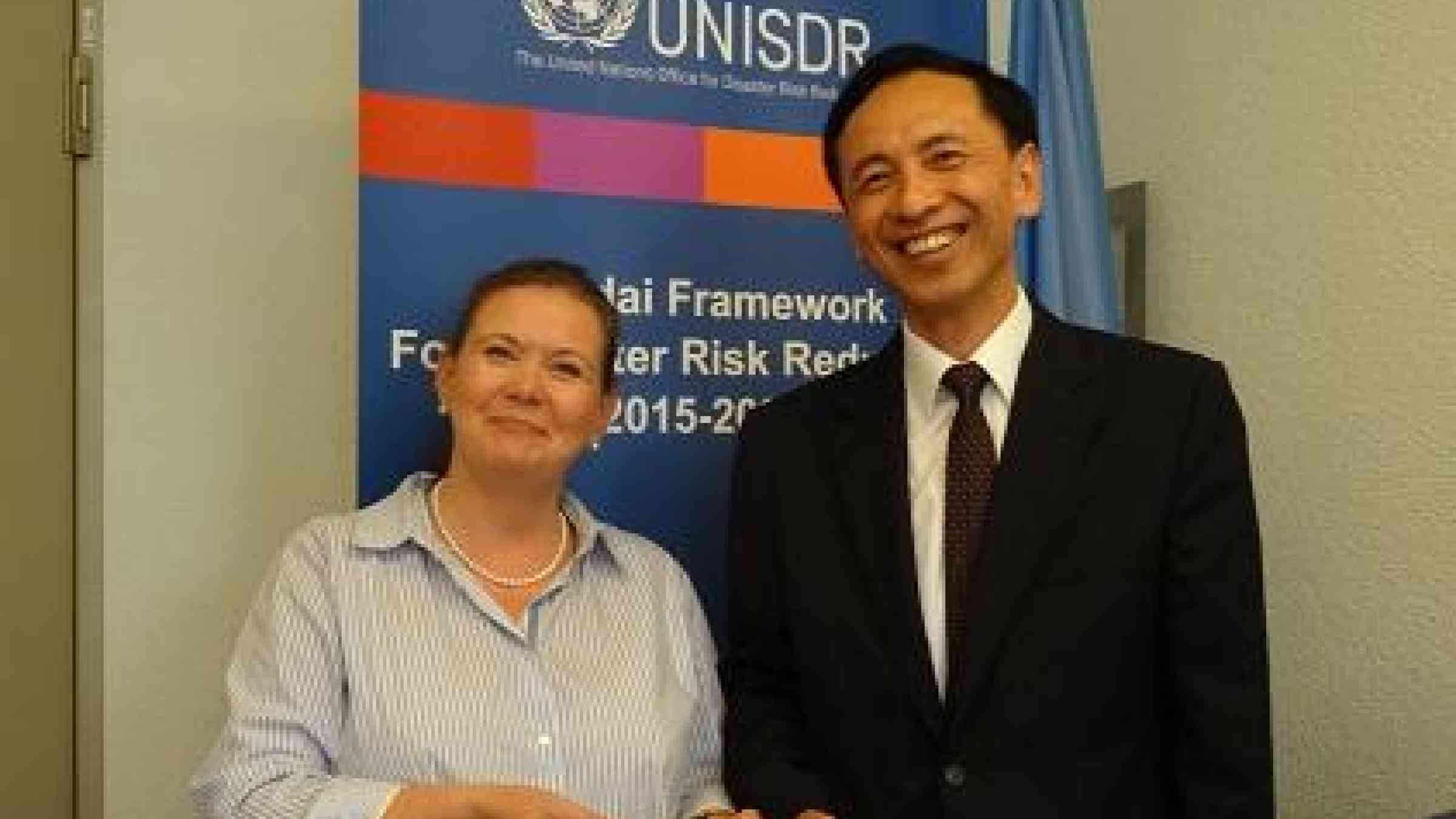China National Radio takes on disaster risk

GENEVA, 29 August 2016 - China National Radio today said it would launch a new service for its 700 million listeners which will focus on disaster risk reduction.
The station's President, Mr. Yan Xiaoming, met today with UNISDR Director, Ms. Kirsi Madi, to discuss mutual collaboration in the build up to International Day for Disaster Reduction which is marked every year on October 13. Under the slogan Live To Tell, the theme for this year’s day is reducing disaster mortality which has been a key challenge for China, one of the most disaster prone countries in the world.
Ms. Madi welcomed the delegation and highlighted how important a role the media had to play in informing and educating the public on disaster risk. Referencing the global plan to reduce disaster losses, the Sendai Framework for Disaster Risk Reduction, Ms. Madi, said: “A key priority in reducing loss of life, the numbers of people affected by disasters and economic losses is to educate the public, the private sector and policymakers. Everybody listens to the radio and it is a perfect medium for disseminating key messages about prevention and safety.”
China has brought down the death toll from floods in recent years and China National Radio through its emergency channel, has played a central role in that strategy ensuring that villagers in remote areas without access to mobile phone networks or television, are risk-informed, aware of life-saving measures and know when to evacuate to safety.
China is currently experiencing record flooding in many places and the national radio station has six groups of journalists operating in the field, explained Mr. Cai Xiaolin, Director of China National Radio’s news channel. He said that all 17 channels can switch to emergency mode when necessary.
In his briefing, Mr. Xiaoming said that China National Radio often organises air drops of radios into remote locations to ensure villagers are up to date and in some cases will set up speakers in a prominent place in a village to ensure that everyone has access to the station’s emergency channel.
During the last major earthquake to hit China, the Yunnan earthquake which struck in August 2014, China National Radio was able to broadcast live from the epicentre keeping people up to date on the news and spreading safety messages as aftershocks continued. The earthquake killed 590 people, injured 2,400 and led to the evacuation of 230,000.
Two months ago, on July 28, the station marked the 40th anniversary of the 7.8 Tangshan earthquake in north eastern China which destroyed the city of Tangshan and killed over 240,000 people making it the deadliest earthquake of the 20th century.
Echoing the theme of this year's International Day for Disaster Reduction, the station marked the disaster by interviewing people who had lived to tell the tale of their survival in that harrowing event.
Ms. Madi said that UNISDR very much welcomed China National Radio’s commitment to disaster risk reduction and looked forward to collaborating on initiatives such as media training for journalists and International Day for Disaster Reduction.